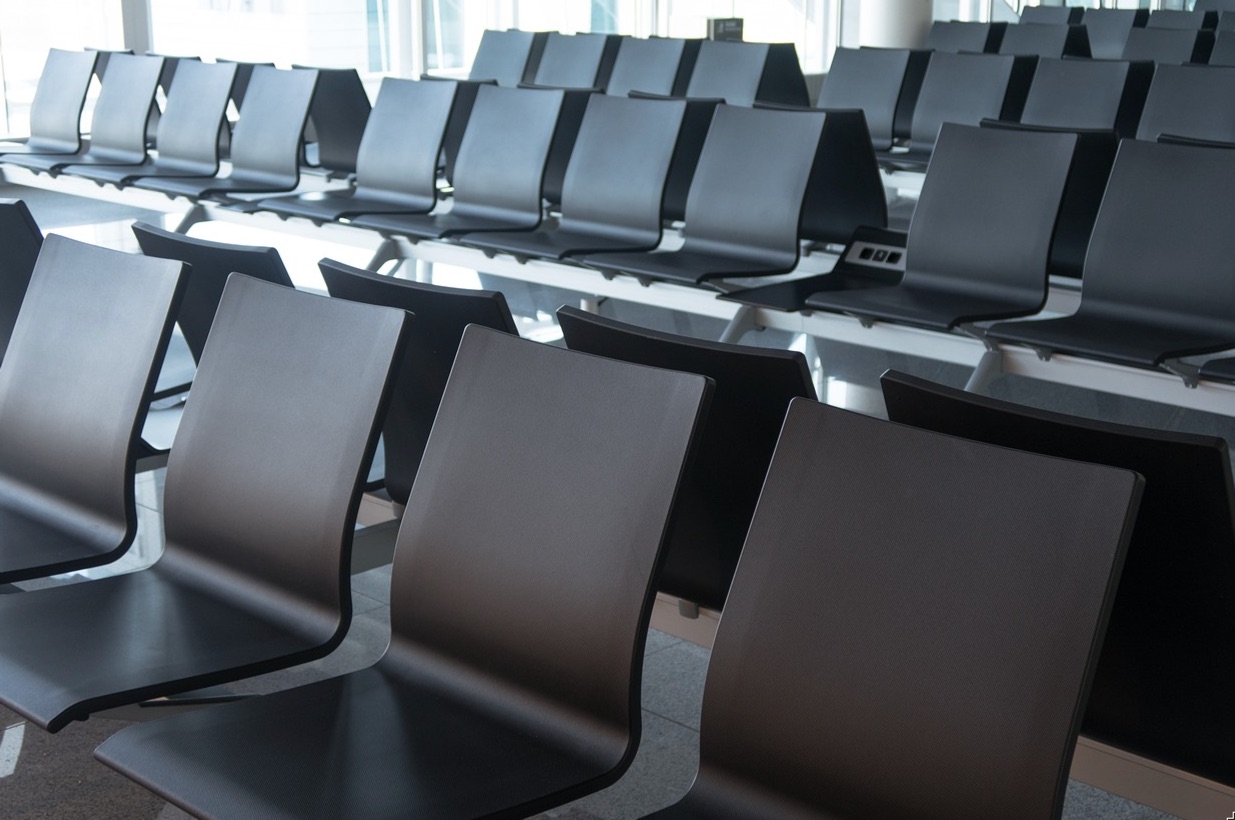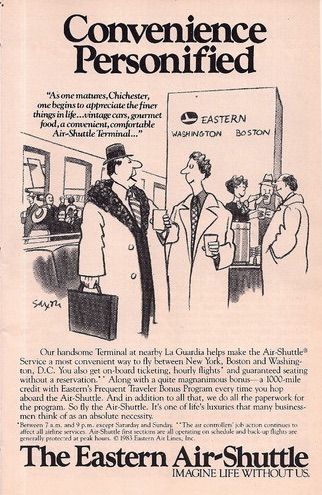I can remember the Eastern Shuttle. From the 1960s, for two decades, it departed hourly from LaGuardia to Washington D.C. and Boston. No need for reservations, no check-in, no boarding passes. Coffee cup in hand, commuters ran for the flight. If it was filled, the airline had another plane in reserve to take you to either destination. The price of the trip to D.C. was $12.75 in 1961–the equivalent of $131.64 today.
An Eastern Shuttle ad:
Now, defining cost as sacrifice, flying is much more expensive. But it does depend on the airport.
The Best Airports
As planes got bigger, gates had to be farther apart. Explained by an aviation executive, “When you park 10 planes next to each other and they’re 75 feet, it naturally translates to a much longer walk.” At 2.16 miles, the longest airport hike (if you do not take the “train”) is between Terminals B and E at Dallas Fort Worth. When designers of Orlando’s new $2.8 billion terminal eliminated the moving walkways, passengers complained and will probably get them added. We can guess that the walkways were replaced by bars, restaurants, and seats.
The result?
At the largest airports, we had to walk some hefty mileage. Predictably, distances shrink at smaller airports. When I’ve flown on JetBlue from Westchester County Airport, from parking to security to the gate, I had almost no walk:

However, when a shoe company asked fliers if they would avoid a small airline because of a long walk, they said no. In addition, 41 percent of the fliers in their 1,000-person survey said they wear sneakers or other casual shoes at airports.
Rating Airports
In its annual survey, the Wall Street Journal separately ranked large and midsize U.S. airports. In their reliability slot, the 10 metrics included on-time departures and arrivals, flight cancellations, and baggage claim rating. Meanwhile, for Value and Convenience, in a list of 20, they looked at average fares, airport layout, bathrooms, restaurants, and even the number of seats at a gate.
With Phoenix in the #1 spot, these were the Wall Street Journal’s top 10. I should note that I could not determine if Phoenix’s overall score of 63.4 was out of a possible 100. If yes, then the numbers are rather dismal:
Cost:
Remembering that economists define cost as sacrifice, we can ask about airport cost. Comparing, we see that Phoenix, with low taxi times is high on reliability. However, its shops and restaurants have lower ranks. As a result, if we do not want to sacrifice time, then the tradeoff is the shops and food. My own local airport, Newark, at #20, has 71-minute arrival delays and low scores for most of WSJ’s 30 categories. Serving the New York City area, still. it is usually crowded.
But using it has a high cost.
Our Bottom Line: Airport Revenue
The quest for revenue can lower an airport’s rank.
Airports need the revenue that comes from airlines, retailers, and you and me. What we call aeronautical revenue comes from the runway, taxiway, and parking charges that airlines pay for using the airport’s facilities. Meanwhile, their non-aeronautical revenue comes from what we pay for parking, rental car fees, the rent they charge retailers, advertising.
Like all businesses, airports need the higher revenue that can determine their architecture and amenities. Those decisions elevate or diminish our costs.
My sources and more: While yesterday’s WSJ had several excellent articles on airport ranking, I had to look elsewhere for the details. For walking, that took me to CNN and Kuru Footware.
Please note that our section on Eastern was updated from a previous econlife post.








